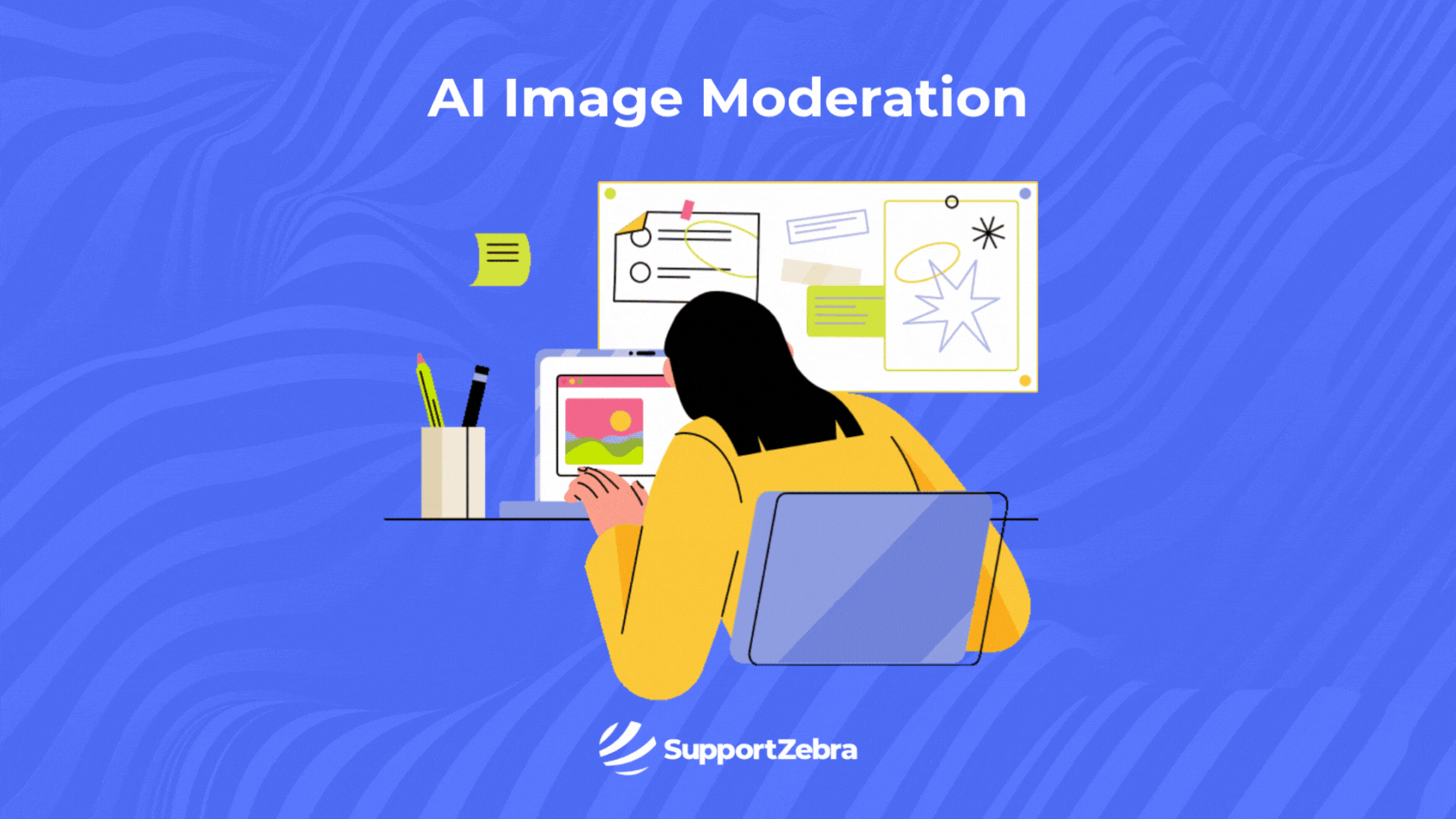How AI Image Moderation Works and Why Your Platform Needs It
Online platforms are constantly flooded with user-generated images, and without proper moderation, harmful or inappropriate visuals can quickly slip through the cracks, damaging your brand and user trust. Relying solely on manual review can leave your team overwhelmed and your community exposed to graphic, offensive, or even illegal content. AI image moderation provides a faster, smarter, and more scalable approach to protecting your platform and users from reputational or legal risks that can spiral out of control.
What Is AI Image Moderation?
AI image moderation is the automated process of scanning, analyzing, and filtering images uploaded to digital platforms to detect and block content that is inappropriate, offensive, or in violation of policy. By leveraging artificial intelligence—specifically, computer vision and machine learning—these systems can process vast volumes of user-generated images in real-time, ensuring safer online environments for users and reducing the burden on human moderators.
How Does AI Image Moderation Work?
AI image moderation systems are built on advanced computer vision models trained on massive datasets containing both acceptable and unacceptable imagery. These models learn to recognize patterns, shapes, colors, and contextual cues that indicate the presence of objectionable content, such as nudity, violence, hate symbols, drugs, or other policy violations.
The process typically involves:
- Image Upload: When a user uploads an image, it is automatically sent to the AI moderation system.
- Analysis: The AI scans the image for specific criteria (e.g., nudity, weapons, offensive gestures) using object detection and classification algorithms.
- Scoring and Classification: The system assigns confidence scores indicating the likelihood of various types of content being present (e.g., “adult content: 0.87”).
- Action: Based on these scores and predefined thresholds, the platform can block, flag, or allow the image, sometimes sending ambiguous cases to human moderators for review.
What Types of Content Can AI Image Moderation Detect?
AI image moderation tools are designed to identify a wide range of potentially harmful or unwanted content, including but not limited to:
- Nudity and partial nudity (including swimwear)
- Sexual or racy content
- Violence and gore
- Weapons
- Drugs and drug paraphernalia
- Alcohol
- Hate symbols and hateful imagery
- Offensive gestures
- Gambling
- Profane or offensive text within images
- Faces (including age and gender detection)
- Celebrity likenesses
- QR codes and pictures found elsewhere online
How Accurate Is AI Image Moderation?
Modern AI image moderation systems are highly accurate, particularly for clearly defined categories such as nudity, violence, and weapons. They can process images in real time, with some platforms reporting moderation results in under two minutes for over 90% of cases. However, accuracy can vary depending on:
- The quality and diversity of the training data
- The complexity of the content (e.g., context, cultural nuances)
- The presence of manipulated or adversarial images
For ambiguous or context-dependent cases, human moderators are often needed to make the final judgment.
Why Is AI Image Moderation Important?
The exponential growth of user-generated images on social media, forums, dating apps, and e-commerce sites has made manual moderation impractical and costly. AI image moderation offers several key benefits:
- Scalability: Can handle millions of images daily without fatigue.
- Speed: Provides real-time or near-real-time moderation, preventing harmful content from being published.
- Consistency: Reduces human error and bias, ensuring uniform enforcement of policies.
- Safety: Shields human moderators from psychological harm caused by repeated exposure to disturbing content.
- Cost Efficiency: Reduces operational costs by automating the bulk of moderation tasks.
Can AI Replace Human Moderators?
While AI dramatically reduces the need for manual review, it is not a complete replacement for human judgment. AI excels at filtering out clear-cut cases and handling large volumes, but human moderators remain essential for making nuanced decisions, understanding cultural context, and addressing edge cases where AI may struggle. The best practice is a hybrid approach that combines AI efficiency with human insight for optimal results.
How Customizable Are AI Image Moderation Systems?
Most AI image moderation platforms offer customization options to align with specific brand values, community guidelines, or legal requirements. You can typically:
- Adjust confidence thresholds for different content categories
- Add or modify content categories (e.g., block certain logos or symbols)
- Integrate custom lists of banned images or patterns
- Combine automated moderation with manual review for flagged images
What Technologies Power AI Image Moderation?
AI image moderation relies on a blend of technologies, including:
- Machine Learning: Models trained on labeled image datasets to recognize unwanted content.
- Computer Vision: Algorithms for object detection, classification, and localization.
- Natural Language Processing: For analyzing embedded text in images.
- Cloud APIs: Scalable services from providers like Amazon Rekognition, Microsoft Azure Content Moderator, and open-source alternatives.
- Microservices Architecture: Modular systems for handling image and text moderation separately, often with API gateways for integration.
What Are the Limitations and Challenges?
Despite its strengths, AI image moderation faces several challenges:
- Contextual Understanding: AI may misinterpret satire, art, or cultural symbols.
- Adversarial Attacks: Malicious users may attempt to bypass moderation with manipulated images.
- Bias: Models trained on biased datasets may produce unfair outcomes.
- False Positives/Negatives: Some safe images may be incorrectly blocked, while some harmful images may slip through.
- Privacy Concerns: Scanning personal images raises data privacy and security issues.
How Can You Integrate AI Image Moderation Into Your Platform?
Integration is typically achieved via APIs provided by moderation platforms. Steps include:
- Registering for an API key or service account
- Sending images (as files or URLs) to the moderation endpoint
- Receiving and interpreting moderation results (scores, flags)
- Taking automated action (block, flag, allow) based on your policies
Many platforms offer SDKs, UI kits, and extensive documentation to simplify the integration process.
What Does the Future Hold for AI Image Moderation?
AI image moderation technology is rapidly evolving. Future advancements are expected to bring:
- Improved accuracy and contextual understanding
- Better detection of manipulated or deepfake images
- More nuanced moderation for diverse cultural and legal standards
- Enhanced privacy and security features
As AI models become more sophisticated, the ability to keep online spaces safe, inclusive, and welcoming will continue to improve, making AI image moderation an indispensable tool for digital platforms worldwide.
Start Protecting Your Platform With AI Image Moderation Today.

AI image moderation is transforming digital safety, offering scalable, fast, and consistent protection against harmful content. By combining the strengths of AI and human oversight, platforms can foster healthier, more trustworthy online communities.
Let’s be real—if your platform deals with user-generated images, manual moderation just doesn’t cut it anymore. The volume is overwhelming, the risks are too high (think reputational fires or even legal trouble), and frankly, no human team can keep up.
At SupportZebra, we get it. That’s why we blend AI’s lightning-fast detection with human expertise—so you get accuracy and nuance. Whether you need to:
- Block explicit content before it goes live
- Flag harmful imagery (violence, self-harm, etc.)
- Stay compliant across different regions
…we’ve got you covered—no guesswork, no sleepless nights—just scalable protection that keeps your platform safe and trustworthy.
The bottom line? Proactive moderation isn’t optional anymore. Let’s make sure your brand stays protected—without slowing you down.

